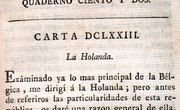Each language has its own phonology. Phonology deals with the patterns or structure sounds. For example, in English, unvoiced and voiced consonants, blending syllables, diphthongs and various pronunciations for the same letter or letter combination all fall under phonology. Rather than only correcting your ESL students' pronunciation as they speak, you can lead some activities that will help them experientially learn the phonology of the English language.
Rhymes
According to Stephen F. Austin State University, rhyming, as well as alliteration, is one of the first levels of phonological knowledge. Before starting the activity, brainstorm with your students various words that rhyme. Write them on the board, so that students can see that some words with endings of different spellings, such as "try" and "pie," still rhyme. You can even get them in the mood by reading them a nursery rhyme or a Dr. Seuss storybook; even adult ESL students may get a kick out of this. For the activity, write a short English poem on the board, but omit some of the words that are part of a rhyming pair. For example if line 1 rhymes with line 2, omit the last word in line 2. Ask students to guess which words belong in the blanks, based on the context and the rhyming sound.
Relay Race
Combine any phonological pattern you are working on with your students into a relay race. For example, if you have been working on voiced and unvoiced consonants, the relay can consist of teams sorting between both types of sounds. Make word cards, such as "berry, able, same, zoo, tower, collect and late," to represent words with voiced consonants; "choke, pressure, rich, tooth, afraid, stew and sheep" can be words for your unvoiced consonant cards. Provide a copy of each card to each team; place tape or sticky tack on the back of each card. Write a table on the board with two columns, one for unvoiced consonants and one for voiced consonants, for each team; ask teams to line up single file. Teams race to stick their words under the appropriate heading; each player should take at least one turn. The first team to complete the challenge, assuming they sorted the words correctly, wins.
English Sounds
ESL students tend to have the most difficulty pronouncing sounds that do not exist in their native language. For example, Korean students have difficulty with "th" and "ph" words because those sounds do not exist in Korean. Once students have been studying various phonological concepts for some time, test your students to see how well they know the 44 phonemes characteristic of English. Say various made-up words using English phonemes, but every once in a while throw in a made-up word with a sound that does not exist in the English language. For example, according to Master Russia, the Russian language has some sounds that do not exist in English, such as a sound that is a cross between a short "i" and a short "u" vowel sound.The French language has front rounded vowel sounds that are not part of the English language, states I E Languages. See if your students can identify the non-English sounds.
Songs
Ted Power's English Language Learning and Teaching website suggests singing songs with your class so they can focus on particular phonemes. For example, the lyrics to "Blowin' in the Wind" by Bob Dylan contain long i, long y and long o vowels sounds and /f/, /m/, /w/ and /h/ sounds. See if the students can identify words in the song for each phoneme or go over the pronunciation of troubling words and sing the song once more!
Related Articles
References
Writer Bio
Michelle Brunet has published articles in newspapers and magazines such as "The Coast," "Our Children," "Arts East," "Halifax Magazine" and "Atlantic Books Today." She earned a Bachelor of Science in environmental studies from Saint Mary's University and a Bachelor of Education from Lakehead University.











